Stories need rules as much as they need imagination; as counter-intuitive as it seems, placing restrictions on what can happen in your fictional world will help readers to understand the dramatic tensions, threats and challenges encountered by your characters. This is true regardless of the genre you’re playing in.
If you’re writing realist fiction – ie, set in the modern, ‘real’ world, you get a lot of these restrictions built-in and provided for free. A realist story set in 2018 won’t feature magic, or paranormal activity, or strange creatures. Your readers will immediately and automatically know how gravity works, how the economics of your world functions and what your characters can and cannot do – and, usefully, you don’t need to explain any of it. (a fascinating side effect is that a story set in the modern day slowly but surely slips into being a period piece as we naturally age beyond its publication date – cultural and technological assumptions can become strange, unfamiliar and controversial to audiences reading the same text 100 years later)
The further your writing strays from the ‘real’ world into imagined and entirely fictional settings, the more important it becomes to establish the rules of the world. A fantasy adventure novel needs to be anchored in rules for the drama to function – otherwise every character and plot moment becomes a deus ex machina, changing on the whim of the writer and casting the reader adrift.
In science fiction, this could mean establishing the limits of what the future technology is capable of – can the spaceships travel faster than light, through hyperspace, or are they limited by known physics? Such decisions will drastically affect the stories you are able to tell: if you’re wanting to tell a huge space opera, then you’re most likely going to require advanced technology simply to make the interstellar geography fit around your plot. There’s no right or wrong approach here – consistency is what matters. If Kim Stanley Robinson’s super-detailed and realistic Red Mars trilogy had introduced aliens or wormholes halfway through it it would have broken the fictional construct of the story; whereas a TV show like Farscape is designed from the beginning to be highly accepting of high technology and fantastical concepts.
I spoke with writer and tutor Ian Nettleton about science fiction world building on the National Centre for Writing podcast. You can give it a listen here:
SF at least benefits from often being derived from our current world – extrapolated out into an imagined future. That builds in many of the limitations found in realist fiction, albeit with fictional science built on top. Fantasy doesn’t receive such automatic benefits, especially high fantasy which incorporates magic, wizards, portals and other concepts. Lord of the Rings is the classic example – while Tolkien rarely states anything explicitly, the abilities of Gandalf and elves are kept very limited, so that the story is never undermined by a wizard snapping his fingers and fixing problems. Patrick Rothfuss’ The Name of the Wind has a detailed magic ‘system’, essential to the book’s setting of a magical academy. The imposed rules enable the reader to understand what the characters are attempting, and to appreciate their successes.
The risk of being vague
There can be a temptation to be quite vague about your systemic rules, so that you maintain an air of mystery and avoid tying yourself in knots. There’s a risk to this, though, which is that you leave the reader to fill in the gaps. In most situations this is exactly what you want – engaging the reader’s imagination is the best way to develop a real connection when it comes to character developmnt, and other forms of world building – but when it comes to the hard rules of your universe, being coy can backfire.
Star Wars is a fictional universe with rules that have never been clearly defined, and which has passed through many different creative hands over a very long period of time. It’s an interesting case study, as it’s resulted in some parts of the audience creating their own fixed idea of the fictional ‘rules’, based on their primary interaction with the franchise (eg, the original series, the prequels, the expanded universe). This manifested most overtly in the reaction to The Last Jedi, in which some audiences had a strong conservative response to newly presented ‘Force’ powers, claiming that the film was running counter to the established rules of the story. Star Wars, however, has always tweaked and introduced new rules with each film, making it a thorny argument – the protracted development and release of the various movies over decades has led to audiences being split by generation, with their childhood encounters with the Star Wars story becoming their own personal ‘canon’. It’s a stark example of how establishing only very vague rules in the storytelling can lead to a conflicted audience response.
In the case of The Last Jedi, if there’s a fault to be perceived (and I’d argue there isn’t – the film’s deconstruction of familiar Star Wars tropes is what I liked about it) it isn’t with director Rian Johnson, but with all the previous Star Wars films, which never took their world building seriously enough. Star Wars has tended to think that making things dirty is all you need to do when building a science fiction setting.
This isn’t to say that you need to lay out all the rules right at the start of the book in intricate detail: nobody wants a massive infodump telling them what can and can’t happen.
Case in point: UBER by Kieron Gillen
A particularly impressive example of rules-based world building can be found in Kieron Gillen’s comic series UBER, which chronicles an alternate reality in which the Nazis developed super-powered soldiers at the tail end of World War 2, prolonging the war and changing the subsequent course of the 20th century.
Given that the story begins in 1945, UBER opens as historical fiction, inheriting real world rules and the real historical context. At this point, readers intuitively understand what is happening and what should happen next.
Gillen then introduces the ‘Ubermensch’, pivoting the story away from real history and down a new, fictional path. The abilities of these new super-soldiers are precisely defined: they are larger, have immense strength, are invulnerable to conventional weapons and have an energy-based ‘halo’ power that can zap things from afar. So far, so Superman. Critically, Gillen then introduces two specific weaknesses – a carefully timed sniper shot into a super-soldier’s eye can take them out, and they need extensive rest to avoid self-destructing.
The super powers in isolation aren’t especially interesting or original. Gillen’s addition of specific weaknesses is what lifts the story, because it means that the super-soldiers have to be used strategically, by the writer and by the characters in the book. The Nazis can’t simply ‘win’ World War 2 with the the super-soldiers, because they tire to quickly, limiting their use. The story hinges around the complex interplay of their abilities and limitations, exploring the impact they would have on the conflict. At all times the super-soldiers remain only one element in the wider war, rather than being an insta-win. As such, while the book on paper features many of the components of traditional superhero literature, it side-steps many of the narrative cliches and dramatic limitations of the genre.
As the story progresses, the characters explore the strategic and scientific possibilities of the Uber technology. New powers are introduced, always with new, logical, built-in limitations. This heavily rules-based approach to world building is highly rewarding for the reader, because it equips them with all the tools they need to theorise their own strategies and future plot points. It reminds me of good detective whodunnits, which provide the reader with just enough information so that they can work out the mystery themselves, never cheating with impossible plot twists or deliberately retro-fitted details.
The clever trick here is that the characters in the book are often finding out about the ‘rules’ of the powers at the same time as the reader, making the divulging of world detail engaging and plot-driven.
But I don’t like being restricted!
It’s not unusual to see newer writers having a strong reaction against the notion of rules and restrictions. the important thing to always remember is that breaking and bending rules is fine as long as you fully understood those rules in the first place* – that kind of thing is what makes a book exciting and interesting and unpredictable, and introduces readers to new experiences.
That notion applies whether you’re talking about grammar and structure or the way spells work in your epic fantasy novel. If you go around breaking the rules without even knowing them in the first place – again, this applies to writing technique as well as fictional constructs – that’s when you get in a mess and provide an unsatisfying experience for the reader.
* an exception to this is regarding the rule of law, where things get a bit trickier if you start breaking them willy-nilly.
Another one: The Power by Naomi Alderman
I recently finished reading The Power, which is a startling examination of what might happen if ALL WOMEN more-or-less simultaneously gained a superpower. It’s a story which starts small and progressively expands out towards it’s highly unpredictable climax.
It’s also a book which defines its ‘power’ very early on, with the electrical abilities compared to existing marine animals, and tied to a specific organ in the body. As with UBER, Alderman builds in various caveats and restrictions, which is where much of the tension in the book comes from: how much power does each woman have? Can the power be transferred? Does the power ‘run out’? What happens when the power is applied to bodies of water? The ‘power’ is explored all the way through the book in different contexts, but is always built around a core set of rules as to what it can and cannot do.
The clever aspect of both UBER and The Power is not in the rules-based magic stuff, though. The rules are providing an essential foundation but they’re not what the books are really about. In the case of UBER, Gillen is using heightened imagery and violence to explore the human cost and horrors of real war, reacting against a perceived desensitisation in readers. It’s difficult to perceive what World War 2 was really like in realist fiction, so here’s what it looks like turned up to 11.
The Power, meanwhile, is not about the superpower wielded by women in the story. Instead, it’s a story about power in general, and what it does to those who have it (and those who don’t). It’s a story which examines gender, again using a heightened, fantastical twist to highlight particular aspects of the real world and our contemporary society.
In both cases, the metaphor and thematic points being drawn wouldn’t work nearly as effectively if the powers and ‘magic stuff’ was being made up on the spot. It is the consistency of the world building which gives the stories their real power.
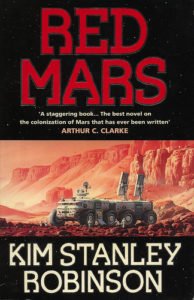
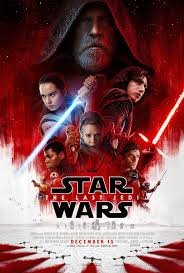
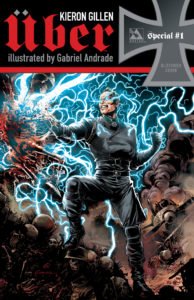
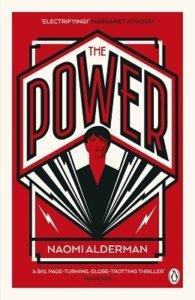


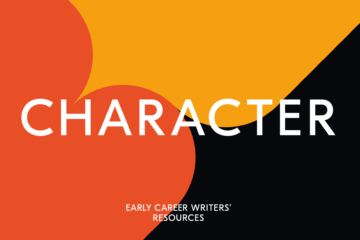
1 Comment